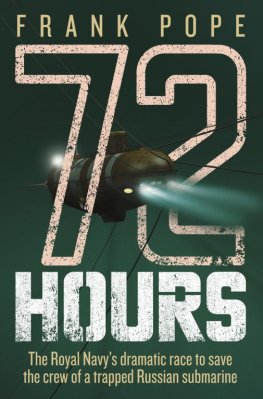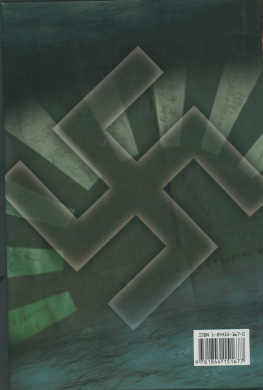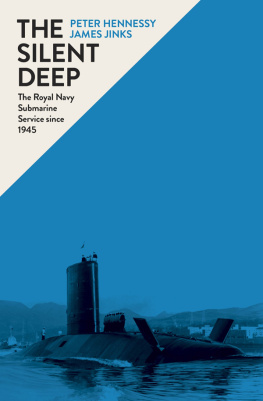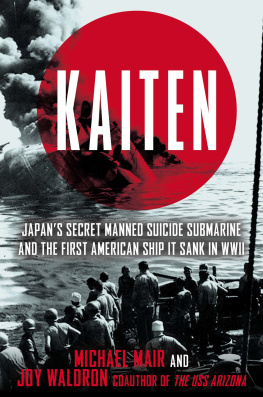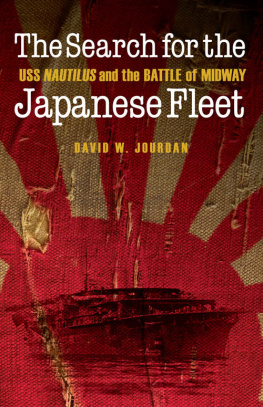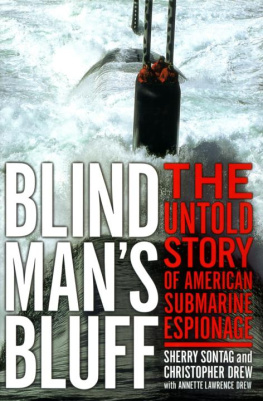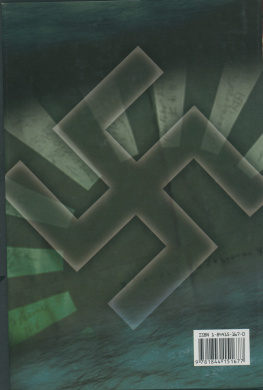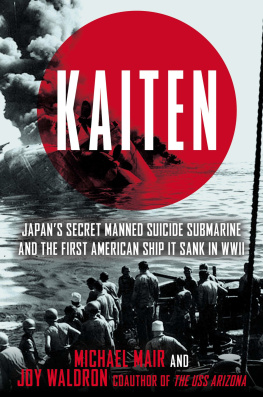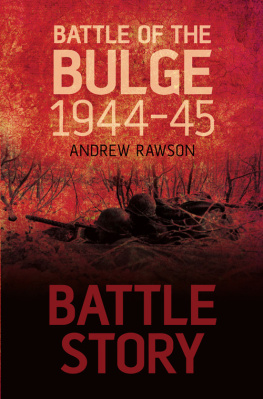The sinking of the Japanese submarine I -52 was a unique event in World War II that provides the only surviving audio recording of a successful aerial antisubmarine attack. David Jourdans dramatic chronicle includes elements of undersea, surface, and aerial warfare along with histories of wartime commerce and codebreaking that caused the battle to be joined.... A terrific read and a wonderful account of a little-known but vitally important episode in naval history!
Adm. James Stavridis, USN (Ret.), former supreme allied commander at NATO
In Operation Rising Sun David Jourdan brings the fascinating saga of I -52s mission alive, three-quarters of a century after her fatal plunge.
Vice Adm. George W. Emery, USN (Ret.), former commander of U.S. and Allied Submarine Commands, Atlantic
Extremely well researched, well documented, and well illustrated, this fast-paced tale of aircraft carrier and submarine operations, codebreaking, undersea research, maritime leadership, and perseverance against almost insurmountable odds will appeal to both novices and experts with an interest in the history and technology of naval aviation, submarines, early antisubmarine warfare techniques and weapons, and underwater search and recovery.
Rear Adm. Thomas A. Mercer, USN (Ret.), former commanding of cer, USN Carl Vinson ( CVN -70)
Operation Rising Sun
The Sinking of Japans Secret Submarine I -52
David W. Jourdan
Foreword by James P. Delgado
Potomac Books
An imprint of the University of Nebraska Press
2020 by David W. Jourdan
Cover designed by University of Nebraska Press; cover image courtesy Christopher Klein/National Geographic Creative.
Author photo Berri Kramer.
Foreword 2020 by the Board of Regents of the University of Nebraska
All rights reserved. Potomac Books is an imprint of the University of Nebraska Press.
Library of Congress Cataloging-in-Publication Data
Names: Jourdan, David W., author. | Delgado, James P., author of foreword.
Title: Operation Rising Sun: The Sinking of Japans Secret Submarine I -52 / David W. Jourdan; foreword by James P. Delgado.
Other titles: Sinking of Japans secret submarine I -52
Description: [Lincoln]: Potomac Books, an imprint of the University of Nebraska Press, [2020] | Includes bibliographical references and index.
Identifiers: LCCN 2019034296
ISBN 9781640121690 (hardback)
ISBN 9781640123205 (epub)
ISBN 9781640123212 (mobi)
ISBN 9781640123229 (pdf)
Subjects: LCSH : I -52 (Submarine) | World War, 19391945Naval operationsSubmarine. | World War, 19391945Naval operations, Japanese. | World War, 19391945Aerial operations, American. | World War, 19391945Naval operations, American. | Submarines (Ships)SalvagingAtlantic Ocean.
Classification: LCC VK 1288. J 3 J 68 2020 | DDC 940.54/293dc23
LC record available at https://lccn.loc.gov/2019034296
The publisher does not have any control over and does not assume any responsibility for author or third-party websites or their content.
Contents
The generation that experienced the Second World War has nearly passed as this book goes to press. It has been eighty years since the opening shots in Japans war with China. It will soon be eighty years since the Nazi attack on Poland on 1 September 1939 that quickly led to global conflict. Despite the passage of the years and of the participants, societys fascination with the war continues, perhaps in part because the seniors of the first decades of the twenty-first century are the children of the wartime generation. It also continues because over the past few decades, the science and art of underwater exploration, in partnership with archival research, has yielded both secrets and forgotten aspects of the war. The story of I -52 is one such tale.
Although spurred by a hunt for treasure, the quest for I -52 revealed more than the wreckage of a lost Imperial Japanese Navy submarine, miles down in the Atlantic Ocean. The wreck yielded no treasure, and plans to raise portions of it have yet to be achieved. Salvage is expensive and rarely yields more than it costs.
What the quest for and the discovery of I -52 ultimately did reveal is a powerful human story of intersecting lives both in 1944 and fifty years later. In Operation Rising Sun, Dave Jourdan offers an insiders view into the world of deep-sea research and survey. This is an honest, uncompromising account of the science, the math, the technology, and, to me, most compellingly, the personalities that often come together in cooperation and, at times, in conflict in Earths final frontier.
James P. Delgado, PhD
Senior vice president, SEARCH
Former director of maritime heritage, NOAA
The global conflict that was World War II gave rise to tales of epic battles; to sagas of heroism, bravery, cowardice, villainy, compassion, and cruelty; and to the drama of pitched struggles and deadly combat. But among the central narratives of the conflict, in many ways most crucial to the outcome, were the more prosaic pursuits of intelligence and commerce. The Allied code breakers who strove tirelessly to provide the fighting men with an advantage on the battlefield were known to few and underappreciated by most. Yet their contributions were vital to the outcomes of the great turning points of the Pacific and African theaters (the Battles of Midway and El Alamein), as well as countless lesser-known battles and engagements. The early successes of the Axis juggernaut were quickly blunted by those defeats, and the value of intelligence deserves no small credit for those outcomes.
Likewise, the grueling, grinding struggles that led to the ultimate defeat of Nazi Germany and the Empire of Japan were aided immensely by the industrial might of the United States and the denial of key resources to the Axis. As Allied sea power and technological advances of the British and American war machines grew, the blockade of seagoing commerce became nearly complete. In the final year of the war, Germany and Japan were increasingly starved of the fuel, food, metals, rubber, chemicals, and medicines they needed to continue the fight.
The little-known story of the sinking of the Japanese cargo-carrying submarine I -52 typifies both narratives and provides a unique chronicle of a combined air, sea, and undersea battle. The submarine was conducting the last mission of a desperate program called Yanagi (Willows), aiming to transport vital war supplies, technology, and human expertise between the Axis confederates. Her mission, cargo, and movements were known to the Allies by code-breaking efforts, and her sinking denied Germany of sorely needed rubber, metals, chemicals, medicines, industrial designs, weapons technology, and know-how.
Incidental to the hundreds of tons of military supplies I -52 carried was her shipment of gold, which was of more interest to the accountants balancing the books than to the soldiers on the battlefield. No amount of gold would substitute as tires for aircraft, armor-piercing shells for tanks, or morphine for wounded soldiers. However, the gold triggered the interest of modern-day treasure hunters, who in turn gave ocean explorers the chance to uncover the details of a unique historical event.
The research that was stimulated by this effort led to the discovery of one-of-a-kind recordings of U.S. Avenger torpedo bomber attacks on an enemy submarine. To hear the pilots and their crews interacting in the heat of battle, flying in the dark of night over a remote ocean, is to understand a little of their skill and warcraft. The wonder of technology that was the U.S. hunter-killer anti-submarine carrier task force and its aircraft can be better appreciated by learning the details. And the accounts of the veterans who flew the aircraft, both in contemporary reports and in interviews over fifty years later, help us better appreciate the heroism and dedication of those young men who served.


